 |
| Crotalus atrox
One of the symbols of the American West, the western diamondback has a reputation amongst herpers as a junk snake but they are vastly
underrated and show considerable variability. |
 |
| A large, dark adult. Eddy County, NM. August 2004. |
 |
 |
| A red adult at a den site. Socorro County, NM. October 2005. |
 |
 |
| A youngster with a full belly and interesting head patterning. Pima County, AZ. August 2006. |
 |
 |
| This is a high elevation atrox den at over 6,500 ft. Valencia County, NM. March 2007. |
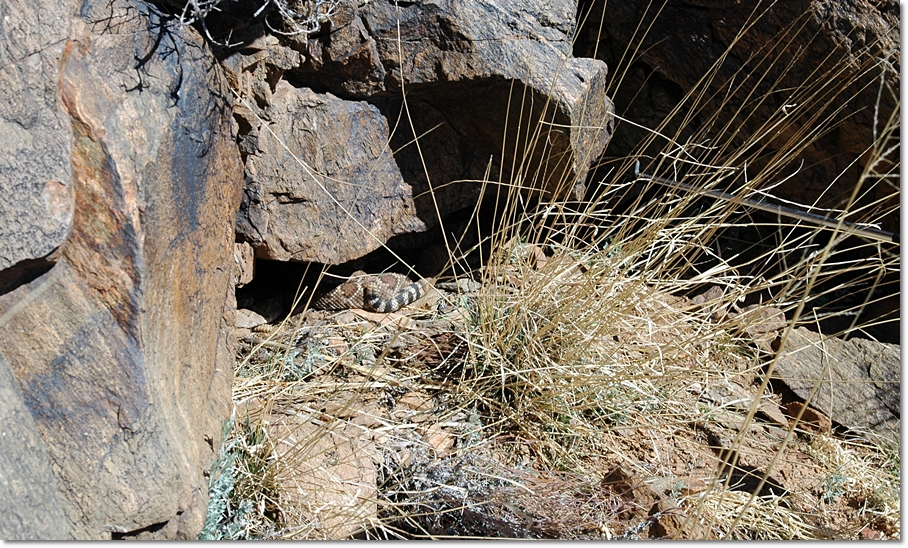



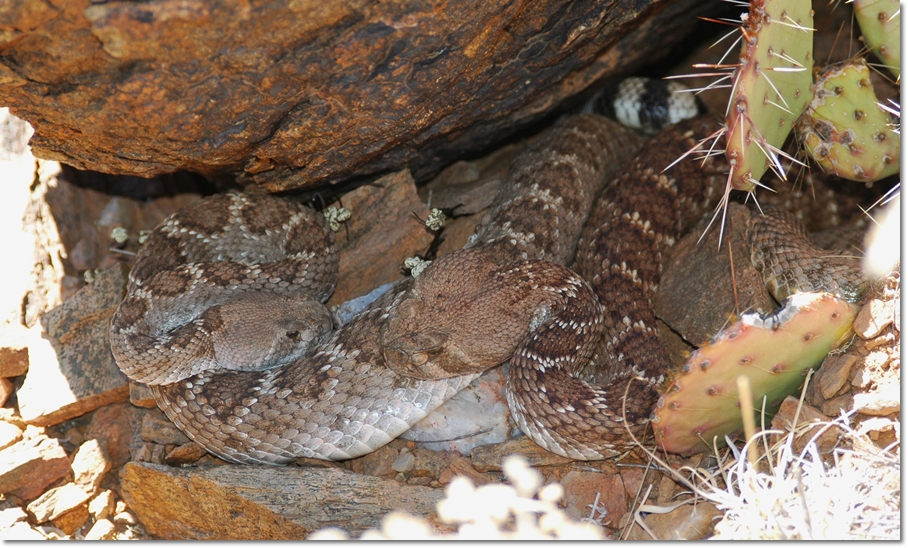
|
 |
| A juvenile. Doña Ana County, NM. May 2007. |
 |
 |
| This adult had a bad eye. Socorro County, NM. August 2007. |
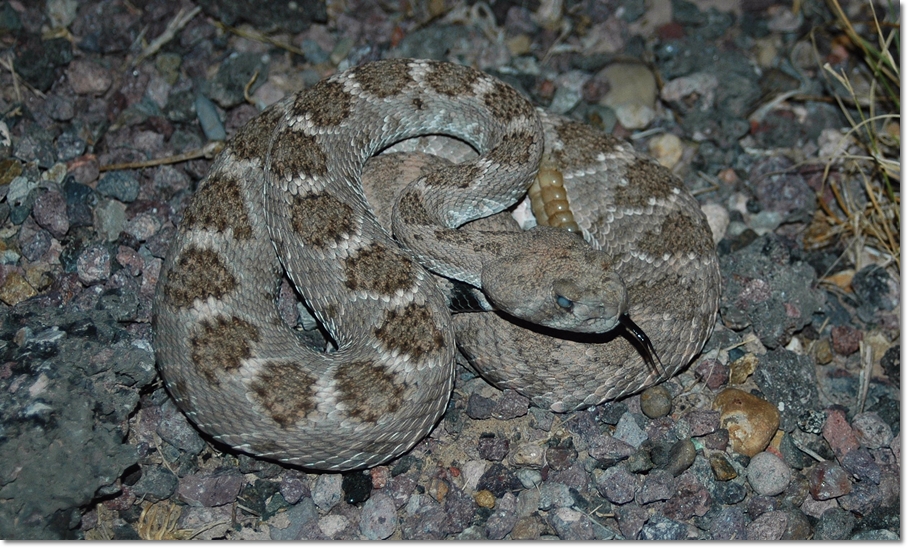 |
 |
| Another den site visit. Three adults basking at the entrance to a den. Valencia County, NM. April
2008. |
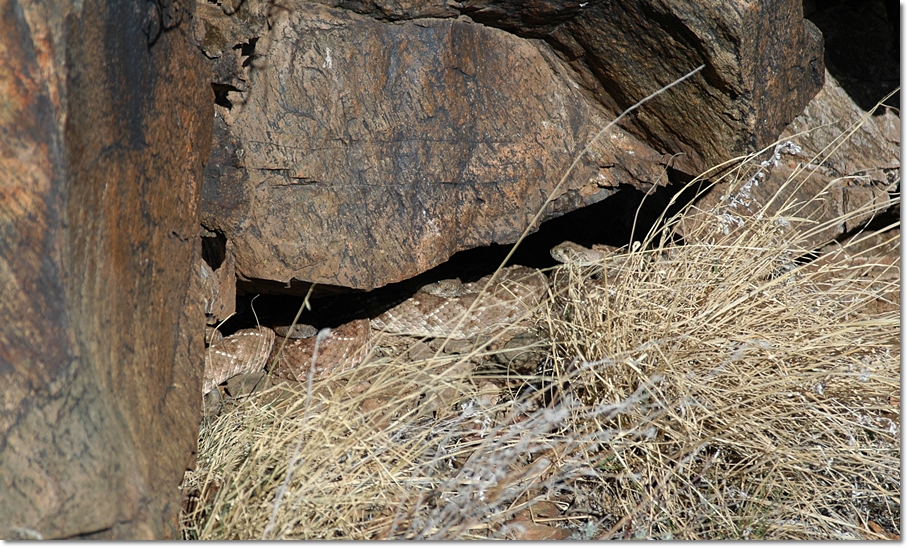
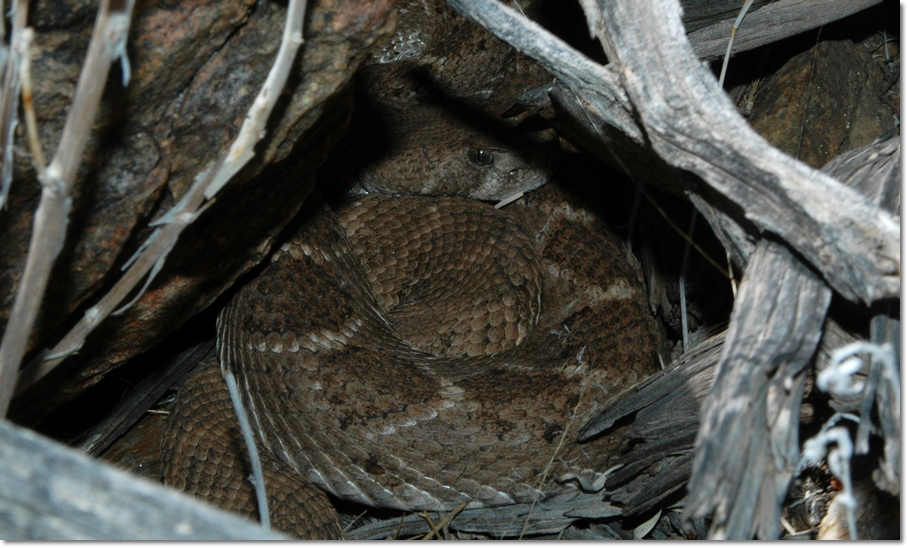
|
 |
| Mid-summer visit to the den. By this time animals have dispersed from the dens and are found in and around the various hillsides in the canyon. Find a shed skin and you may find the snake nearby. Valencia County, NM. July 2008. |
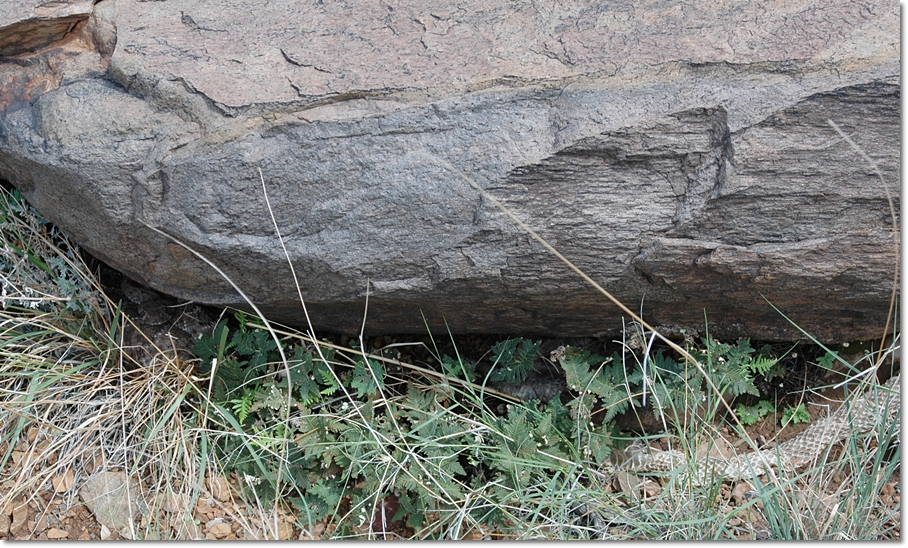

|
 |
| Animals in southwestern New Mexico often have orange to red coloration. Grant County, NM. June
2009. |
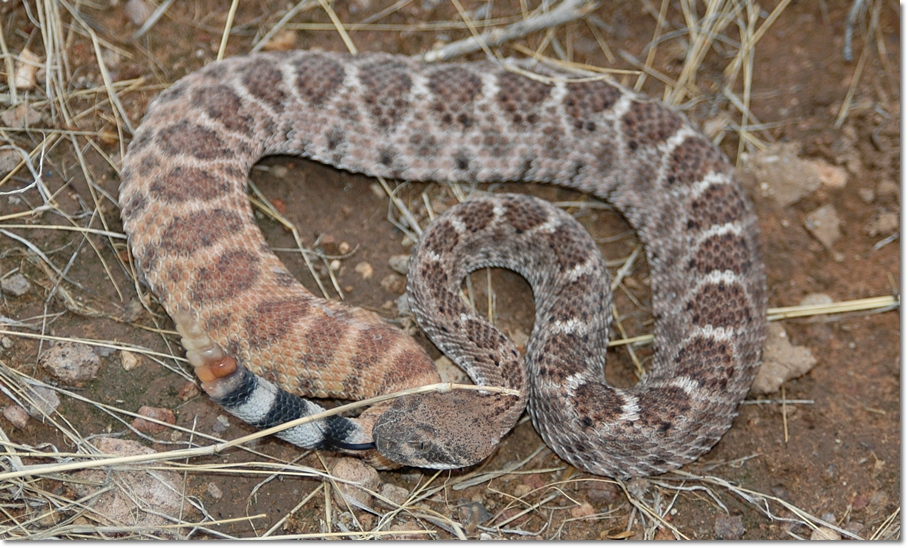 |
 |
| A darker individual from near the Aden Lava Flow. Doña Ana County, NM. February 2010. |
 |
 |
| A light juvenile from River Road. Presidio County, TX. May 2010. |
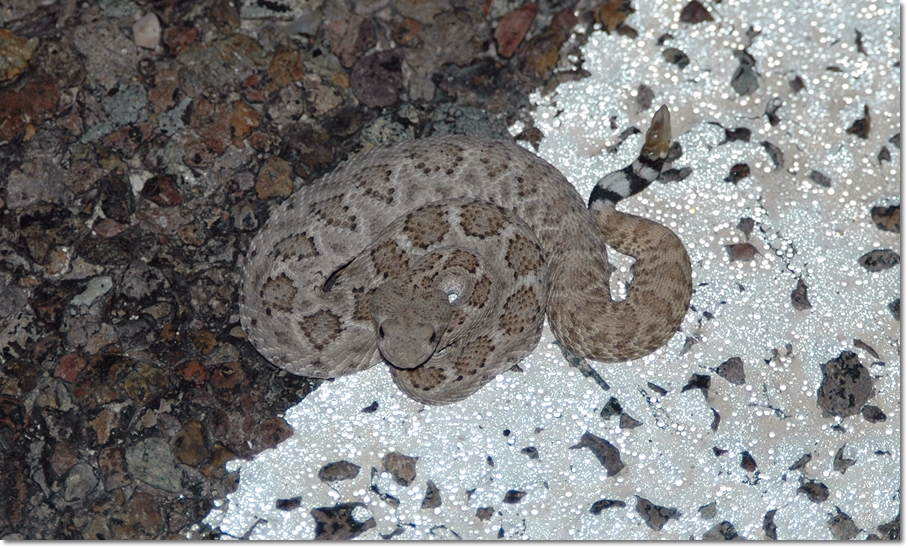 |
 |
| A nice orange animal. Hidalgo County, NM. May 2011. |
 |
 |
| A nice adult with blue/purple hues. Sierra County, NM. August 2011. |
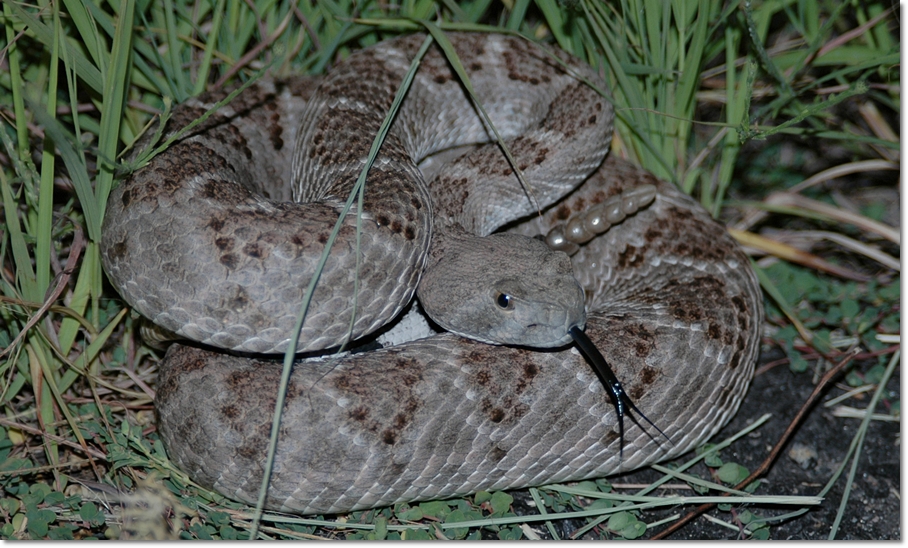 |
 |
| Reddish individual from southeastern AZ. Cochise County, AZ. August 2012. |
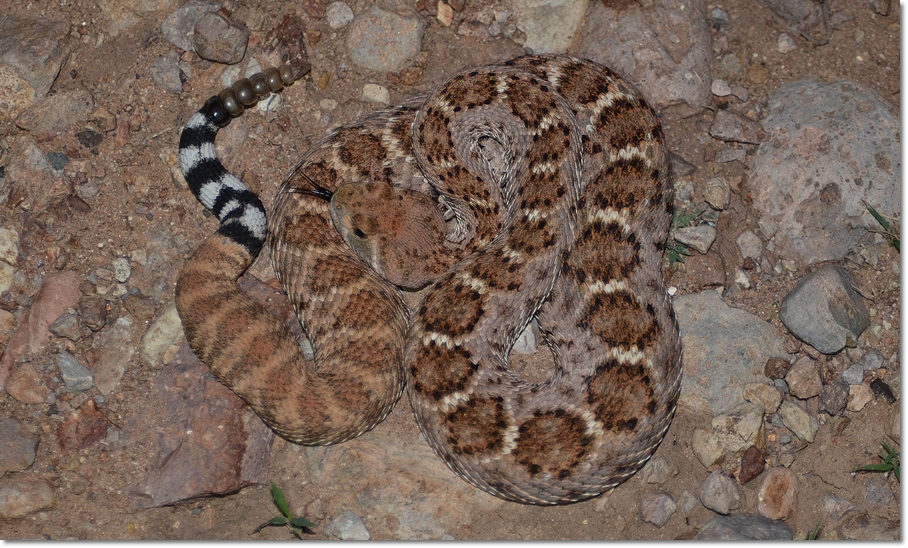 |
 |
| One of the nicest atrox I have seen in the wild. Hidalgo County, NM. July 2013. |
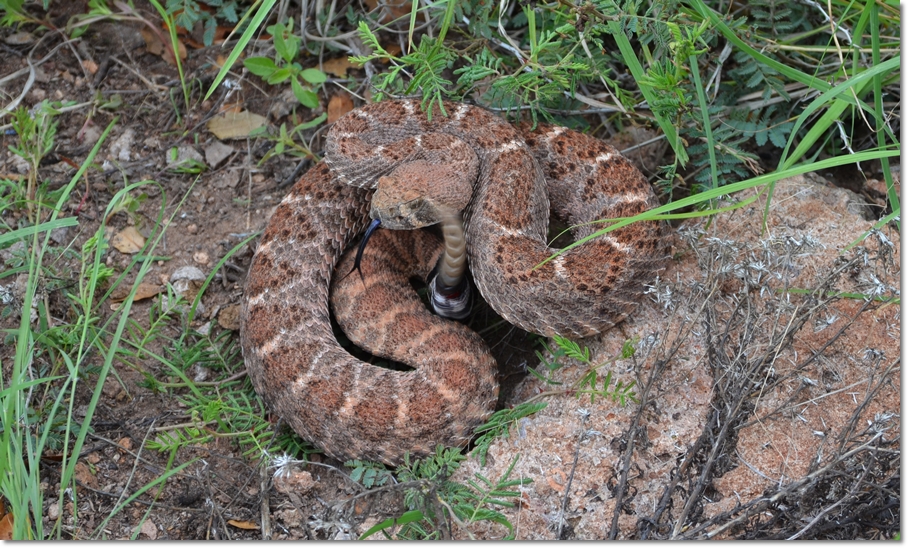 |
 |
| Another nice, red atrox. Hidalgo County, NM. August 2013. |
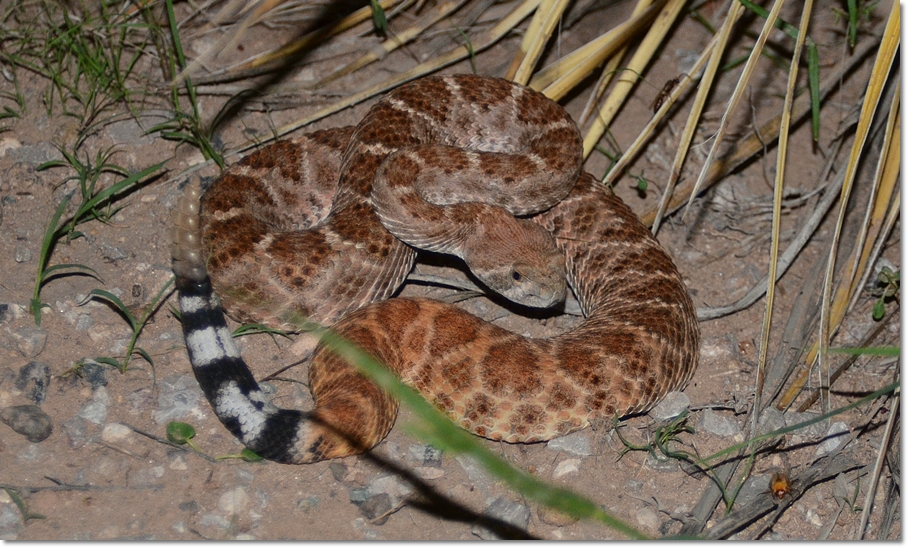 |
 |
| There is nothing really exceptional about this animal except it was my first atrox in California - about
the furtherst west they occur. My friends were not impressed. Imperial County, CA. March 2014. |
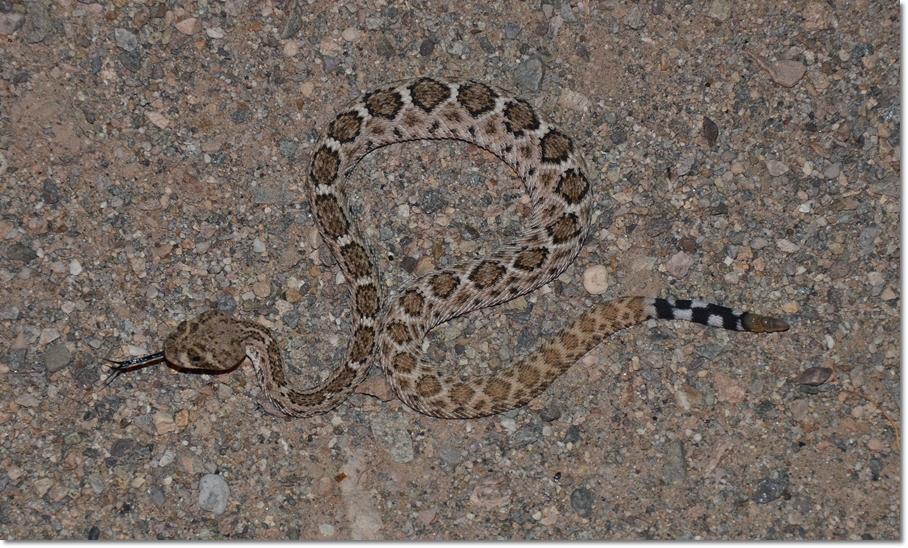 |
 |
| Nothing like seeing a stretched out crote on a dirt road in the morning. Cochise County, AZ. August
2018. |
 |
 |











